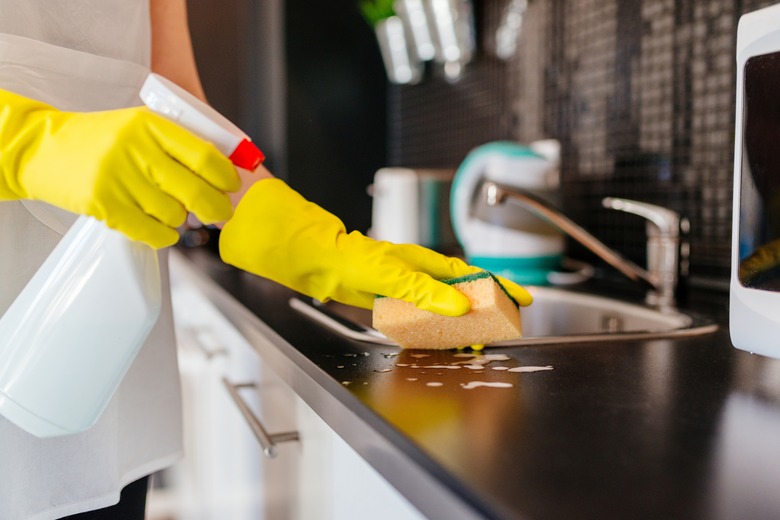Clorox Hazards
We may receive a commission on purchases made from links.
Clorox bleach is commonly used for cleaning and disinfecting surfaces and fabrics. In fact, most of the world's health organizations recommend using bleach to help control the spread of pathogens that can make people sick. While used in homes regularly, bleach causes more injuries and illnesses in children than any other household cleaner. It is important for consumers to understand the potential hazards of Clorox bleach in order to avoid accidents or injuries.
Health Problems and Bleach
Health Problems and Bleach
Clorox bleach can be harmful to humans if ingested or inhaled, or if it stays on the skin for too long. If Clorox makes prolonged contact with the skin, such as when using disinfectant wipes, it can cause skin irritation. If you swallow bleach or it gets into your eyes, it can cause serious symptoms, including nausea and vomiting and temporary blindness.
Exposure to bleach vapors and mist from Clorox spray products while cleaning can aggravate the symptoms of certain heart and respiratory conditions, such as asthma, emphysema or chronic bronchitis. In addition, frequent exposure to bleach fumes can cause asthma as well as trigger attacks in asthmatic individuals.
Oxidization and Bleach
Oxidization and Bleach
Bleach is an oxidizing agent, meaning that it will cause metal corrosion. When bleach is diluted in water, it breaks down into salt and water very quickly. If you are storing bleach solution in a spray bottle with metal parts, over time the bleach can corrode the metal parts in the trigger mechanism. With prolonged contact, undiluted Clorox can cause metal to pit and discolor.
Toxic Gases and Bleach
Toxic Gases and Bleach
When mixed with other chemicals, such as ammonia, vinegar, acids or other cleaners containing chlorine, Clorox produces hazardous gases that can be harmful or even fatal. Clorox should only be diluted with water, according to the specific instructions on the bottle.
Toxic Chemicals and Clorox Bleach
Toxic Chemicals and Clorox Bleach
While chlorine bleach is used to lighten wood and remove stains, do not use Clorox bleach on pressure-treated wood manufactured before February 2002. Before that date, most pressure-treated wood was made with chromated copper arsenate, or CCA, a type of arsenic. When you use bleach on this type of wood, the CCA combines with the bleach to form toxic hexavalent chromium. Hexavalent chromium is very dangerous and can cause cancer and other health problems.
Removing Dye From Fabric
Removing Dye From Fabric
While one of the reasons that many people use Clorox is its ability to remove stains and discoloration from white fabrics, Clorox will also remove dyes from fabric. Be careful not to let Clorox bleach or bleach pens have any contact with colored fabrics, unless you want to remove the color.
Clorox Safety Tips
Clorox Safety Tips
You can avoid accidents or injuries from Clorox products by following the use and safety precautions listed on the containers. Always keep bleach away from children, even if it has a child-proof cap. Store bleach in the original container on a high shelf or a locked cabinet, not under the sink or next to the washer where children and pets may access it.
Never use bleach without diluting it, and let surfaces dry completely before allowing children and pets near them. Use Clorox in a well-ventilated area, and wear a mask if you will be using bleach for an extended period of time or if you are sensitive to the fumes. To quickly clear the Clorox fumes from cleaning, add a fan to a nearby window to pull the air out of the room.
